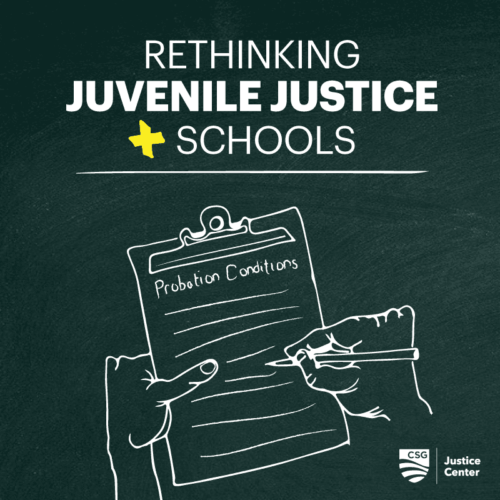
Rethinking Juvenile Justice and Schools
How Students Can Suffer When Cutting Class is Treated as a Crime
Part 1 of 2
Policy Recommendations
Jurisdictions should examine their responses to truancy and identify opportunities to adopt more research-based, developmentally appropriate approaches for helping youth who skip school to avoid the juvenile justice system and stay in class.
Five concrete policy, practice, and funding strategies for policymakers and juvenile justice and education leaders to consider include:
1. Evaluate Current Policies
Reconsider whether legislative and administrative policies that allow youth to be arrested and/or referred to juvenile or other types of courts solely because of school attendance challenges is the most effective approach. Approximately half of states have decriminalized truancy in some manner.
2. Designate Leadership
Designate primary responsibility for addressing truancy to agencies and organizations whose core mission and expertise is focused on education and youth development (schools, youth and family service systems, and community-based organizations) rather than public safety (police, courts, and probation), and allocate the necessary resources accordingly.
3. Focus Interventions
Regardless of the entity responsible, focus truancy interventions on partnerships with youth, families, and communities to assess and address the underlying needs driving youth’s school engagement challenges rather than a punitive approach reliant on mandatory attendance orders and compliance checks that doesn’t address the root cause of an individual’s truancy or foster long-term behavior change. Given the paucity of research on evidence-based truancy interventions, jurisdictions should emphasize this individualized approach as well as invest in interventions such as cognitive behavioral and family therapy that have proven effective more generally at improving outcomes for youth involved or at risk of involvement with the juvenile justice system.
4. Establish Realistic Goals
Establish realistic goals for truant youth’s attendance improvements rather than strict, mandatory daily attendance orders that set youth up for failure given that adolescents are developmentally wired to act impulsively and not consider the long-term consequences of their actions.
5. Use Incentives
Establish a formal system of incentives and developmentally appropriate graduated responses as the primary tools to motivate attendance behavior change rather than sanctions, such as probation, detention, or home confinement, that research shows are costly and ineffective.
 New Hampshire Continues Justice Reinvestment Effort to Improve Conditions for People Who Are High Utilizers of Criminal Justice and Behavioral Health Systems
Read More
New Hampshire Continues Justice Reinvestment Effort to Improve Conditions for People Who Are High Utilizers of Criminal Justice and Behavioral Health Systems
Read More
 New Hampshire Commission Reviews Final Policy Recommendations to Reduce Reliance on Incarceration as Part of Justice Reinvestment Initiative
Read More
New Hampshire Commission Reviews Final Policy Recommendations to Reduce Reliance on Incarceration as Part of Justice Reinvestment Initiative
Read More
 Three Things to Know About New Jersey’s Groundbreaking Community Response Legislation
Three Things to Know About New Jersey’s Groundbreaking Community Response Legislation
In response to growing calls for police reform in New Jersey, particularly following the shootings of Najee Seabrooks and Andrew Washington in March and August 2023, a coalition of law enforcement officials, mental health professionals, and community advocates partnered to explore public safety response alternatives.
Read More














